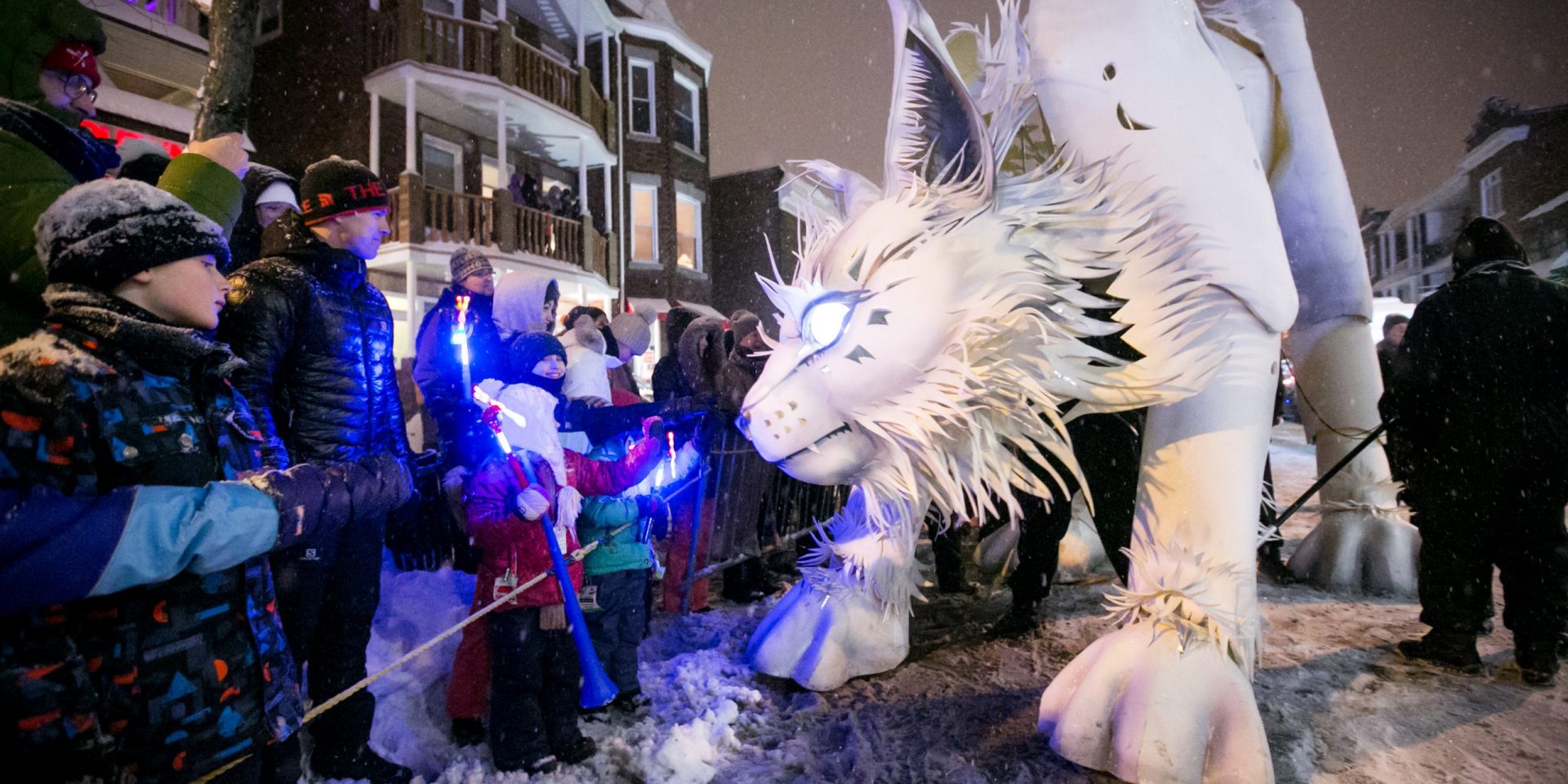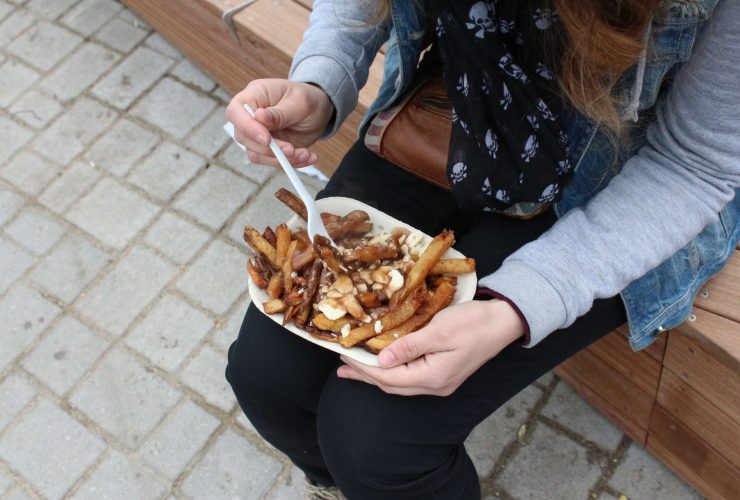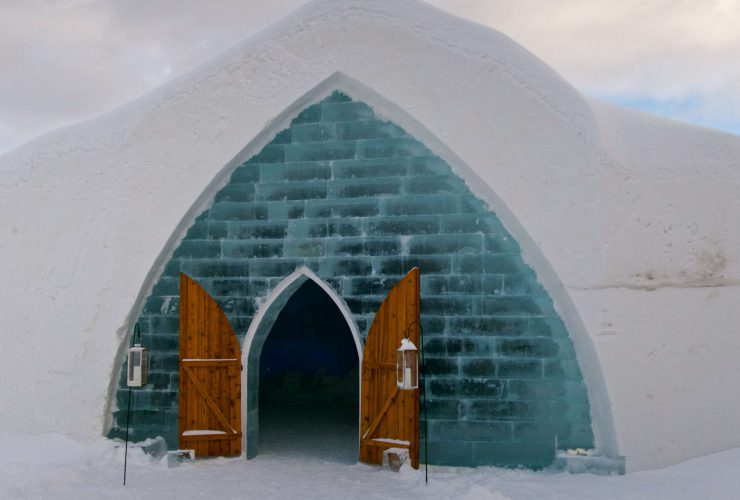Students having a blast during the Winter Carnival educational tour!
Teachers and students had a blast this year at the Winter Carnival! What better way to enjoy the winter cold than to go snow tubing, dog sledding and to go visit the largest Winter Carnival in the world?
Although the weather was cold and the snow relentless, everyone made the most of the winter season and kept active and going, exploring some of Quebec City’s most magical attractions. When asked about their favourite activities on the educational tour, students definitely talked about the snow tubing at Village Valcartier and the exciting dog sledding ride going over the snowy bumps. Did they have a chance to speak French?
“Yes, I spoke French a lot on the tour.” -Sidney
Bon Vivant Educational Tours’ objective is two-fold. First, through educational travel, we seek to inspire students to pursue their French language education and to help them develop into global citizens. Secondly, we strive to facilitate the tour-planning process by offering flexible, personalized and professional service. When asked if the trip motivated them to learn French, here is what students had to share:
“It helps me so that I can talk to and understand people that speak French.” – Ryan
“I saw why learning French is so important.” – Caleb
“I know that there are people who only speak French and I may need to communicate with them.” -Hannah
In terms of culture, there is no better way to learn about culture than to experience it. As reported in the 2009-2010 State of Learning in Canada Report: A Year in Review, 91% of Canadians believe that interaction with diverse cultures is important and 94% of Canadians agreed that cross-cultural interaction helps foster learning. Rachel, one of the teachers on the tour, describes what motivates her to bring students on educational trips:
“The main motivation for bringing students on an educational trip is to get them to learn about a new culture and to experience all the history and language that we show them in school. It’s one thing to talk about the battles and the French language; it’s another thing to experience it first-hand. I feel that bringing students on an educational trip like this one gives them validity to what they learn and gets them to appreciate the language and culture of others.”
Discovering new foods was also part of the cultural experience this winter. Some students loved the famous poutine, while others tasted new flavours in Old Quebec. The narrow meandering streets offer a great variety of cafés, crêperies and restaurants. Ordering food in French and tasting flavour combinations never encountered before was definitely part of the fun for Hannah, student on the tour.
“In Old Québec, there was a little café where I had a sandwich with tomato, brie, avocado, mayonnaise and other things. That was a neat experience because I ordered in French and it was food I never had like that before.”

Another important component of a trip to Quebec City is history. That is why it has been integrated as part of the tour learning objectives:
1.Students will learn the main periods of North American history;
2.Students will realize the value of bilingualism;
3.Students will learn independence and how to live with others;
4.Students will learn specific cultural values and traditions in Quebec;
5.Students will learn new outdoor activities for the winter time.
History comes to life for students when they visit the Plains of Abraham and take a guided walk through Old Quebec. For Rachel, the best part of the tour was indeed visiting Old Quebec and learning about all the history that happened there since it has played an important part in shaping the Canada that we know today. When asked about the educational value of bringing students to the winter Carnival, Rachel emphasized the contact with the French language and culture, as well as the group travel experience.
“The educational value of bringing the students to the winter Carnival is tri-fold: they get to practice speaking their French in an authentic setting where not many people will be able to respond to them in English, they get an authentic view of what it is people from Quebec do to have fun, and they get to develop a sense of camaraderie with people they may not necessarily talk to outside of the classroom and in the community.”

Gilles, another accompanying teacher on the tour, also had great insights to share about the educational tour experience. Teaching grades 8 & 9, Gilles has been travelling to Quebec City on educational tours for many years. When running into former students who attended past trips, it is always the Quebec trip that they talk about first. When asked about his tour highlight, Gilles described the students’ experience when first communicating in French in Quebec City.
“I would have to say that my tour highlight is always the look on the faces of the students when they first realize that they are able to understand and communicate with the locals. It is a validation for our French Immersion and French Integrated programs.”
French Immersion and French Integrated programs provide students with the opportunity to become bilingual at a young age. An educational trip to Quebec City can reinforce the benefit of the programs and inspire students to pursue their French language studies. When asked about it, Gilles mentioned that his motivation to bring students on educational trips is to give students an opportunity to experience a different French culture. He believes that the Winter Carnival is the perfect venue for such a cultural immersion.
“It is the perfect time to visit Quebec. When most Canadian cities seem to hibernate during the winter months, Quebec comes alive! Especially during the Winter Carnival. For me I can’t think of anything more Canadian and I feel fortunate for me and our students to have the opportunity to experience it.”
For many students, it is their first time away from home. It is therefore an experience to grow and develop their autonomy. They get to discover a new destination together with their friends while still benefitting from the support, guidance and knowledge of their teachers. The trip is also a time to have fun, change the routine and enjoy the winter time. In terms of students’ favourite activities, here is what Gilles noted:
“It is difficult to get past Valcartier (snow tubing)…but if you ask many will talk about such things as the narrow streets, older houses and buildings, the basilica or perhaps the chutes Montmorency. It might not be their first response but there is no doubt it would have had a lasting impression on them. But man those tubes sure go super-fast!!”
Other exciting tour activities included dog sledding and a visit to the Ice Hotel. To use Gilles’ words, the Ice Hotel is a “true wonder”. Its unique architecture and the fact that it reinvents itself each year is outstanding. Gilles believes that the pictures shown to students prior to the trip do not do it justice. It is also a perfect venue for an educational tour as it is an artistic and cultural expression in itself. On that note, here is what Rachel had to say about the experience:
“The Ice Hotel was an engineering marvel that brought many students to realize the work and effort that needs to be put in to create such a structure. There was a lot of appreciation of the art work and the willingness of people to stay for a night in such a cold and unconventional environment.”
The dog sledding activity was also a success. It gave students a chance to go back in time and imagine what it would have been like to travel during the winter months as Gilles puts it. Just like the sugar shack, such an activity gives insight into a different time and place in history. Exposing students to other ways of living and different cultural traditions sparks interest, curiosity and opens up new possibilities. This is precisely the reason why Bon Vivant came into existence in the first place. If Bon Vivant’s founder was able to live and work in his second language, it is in no small part thanks to the several student trips that he undertook during his middle and high school years, which sparked his interest for travel, languages and cultures.

In-class activities for students
In order to provide an opportunity for teachers and students to prepare for the Winter Carnival tour, we have developed a winter-themed educational booklet. First exploring the wonderful world of Carnivals around the world, we then take a closer look at the relations between wintertime and culture, focussing on Quebec City’s very own Winter Carnival. The teacher and student booklets include 13 educational activities with curriculum links to the essential graduation learnings, as well as links to social studies, French Language Arts, Science, Mathematics, Technology and Arts.
Interested in visiting Quebec City with your own group in 2016? Contact us and we’ll gladly partner with you to create some winter magic together!




